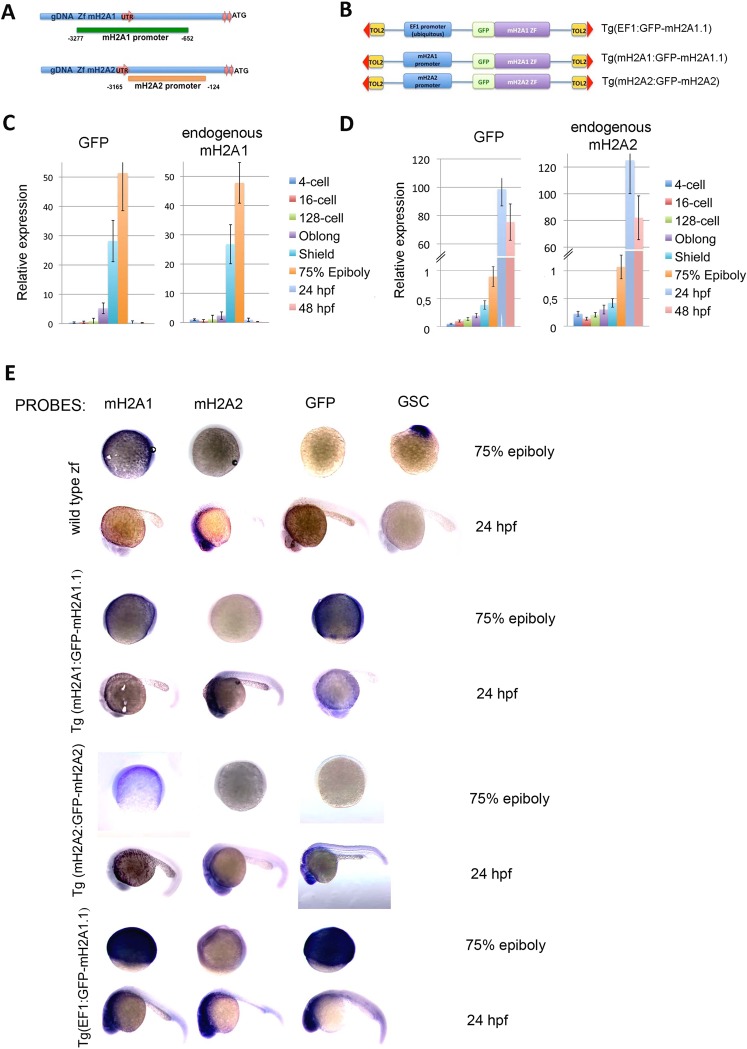Figure 2.
Identification and characterization of mH2A promoter regions and fusion proteins during embryogenesis. (A) Schematic representation of mH2A constructs structure/generated. The origin of mH2A UTR variants were determined from genomic DNA sequence. Identified promoter region responsible for transcription of each mH2A isoform are shown (promoter locations are indicated relative to ORF starting nucleotide triplet, ATG). (B) For mH2A reporter constructs mH2A1.1 and mH2A2 GFP-fusion proteins and either ubiquitous promoter (EF1) (EF1:GFP-mH2A1.1) or endogenous promoter (mH2A1:GFP-mH2A1.1 or mH2A2:GFP-mH2A2) were cloned into pTOL vector (Tol2 sequences that flank each transgene include the terminal inverted repeats (red arrowheads). (C,D) Identified mH2A promoter regions match endogenous expression. Expression analysis was conducted by injecting reporter constructs into the 1–2 cell stage of wt AB zebrafish embryos and collecting them at different development stages. Quantitative RT-PCR was performed to detect GFP and endogenous mH2A1 (C) or mH2A2 (D) expression. Mean values (n = 3) ± SEM are plotted. Values indicate relative expression of the specific gene normalized to GAPDH/TUBULIN. (E) Transgenic embryos for both Tg(EF1:GFP-mH2A1.1) and Tg(mH2A1:GFP-mH2A1.1) at two stages (75% epiboly and 24 hpf) were collected to perform whole-mount RNA in situ hybridization using mH2A1, mH2A2, GFP and GSC specific probes. (n = 50–60 embryos/probe with uniform labeling).

